How an Oura ring prevented me from spreading COVID-19
The Oura ring's data tracking capabilities are powerful tools, and can even help you detect when an illness is coming on. And those tools helped a trainer realize he should get tested for COVID-19, ultimately preventing him from spreading the virus to others.
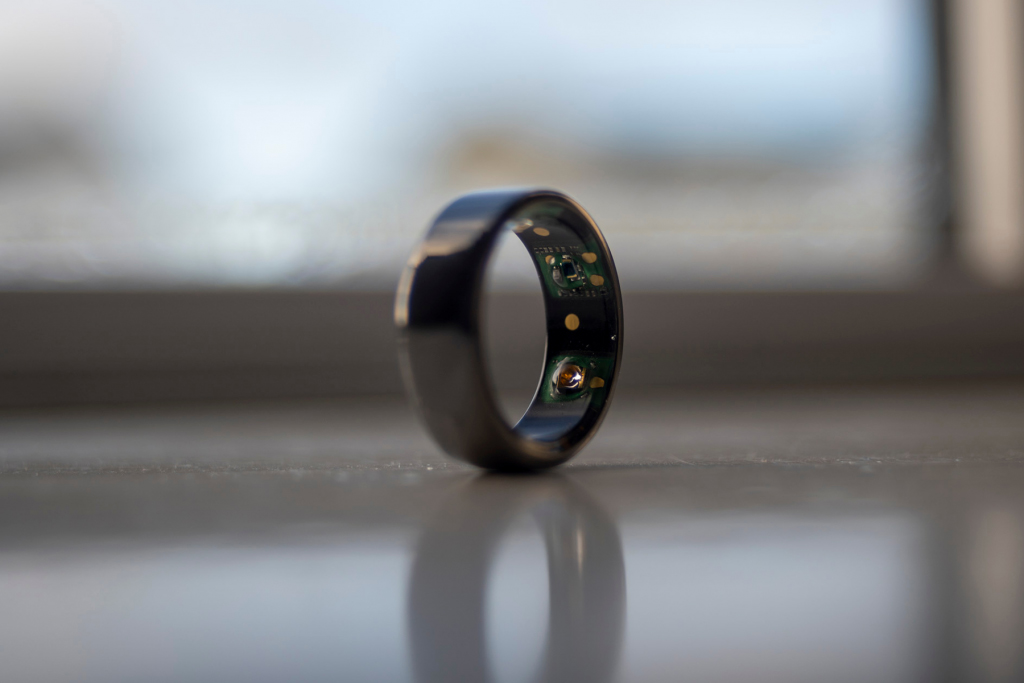
In a time of wearable technologies flooding our society, too much of anything can be detrimental. The constant tracking of daily steps, calories burned and heart rates are a few examples of how some of us may shift from being cognizant to overly reliant on data. I am a firm believer of using data in the correct context, whether that is for daily motivation or conducting an actual experiment. To each your own, as long as you are not becoming a captive to the data and your life is not being affected in a negative way.
As someone who lives an active lifestyle, I have become an advocate of proper sleep and the role it plays in recovery. Throughout my 20’s, I preached and foolishly practiced the mantra, “I’ll sleep when I am dead.” After learning from experts about the benefits of optimizing human hormones and that sleep is actually the most powerful, legal and free performance enhancer on the planet, I realized how wrong I was over the past decade. Being clueless on how I actually slept made me an easy candidate for the Oura ring.
And so I started tracking and analyzing my data, including my sleep. The third week of February — the week of my COVID-19 diagnosis — had promises of being a healthy one, or so I thought.
Monday
Activities consisted of the following: Two online clients along with a strength training session. I had dinner around my normal time of 6 PM and went to bed.
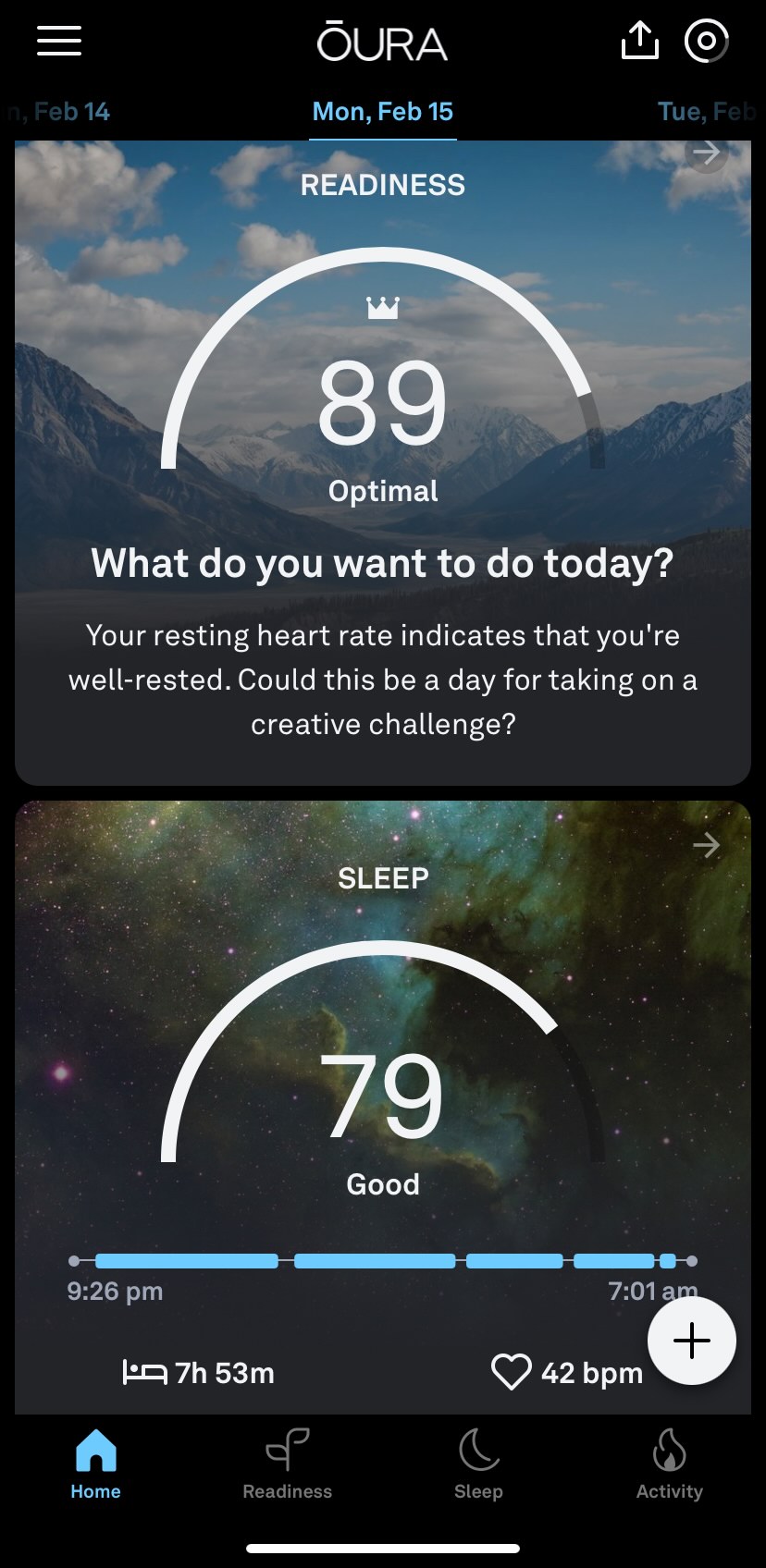

Tuesday
Seeing these results, I felt good. I saw a client in person and had a second successful training day of the week. This was the LAST day I felt good before the virus took over in my body. Tuesday night, I woke up at 12:58 A.M. and was up until 3 AM. It was very unusual for me not to sleep through the night. I developed a constant postnasal drip causing me to clear my throat every 5 minutes. This was the first clue that something was wrong.
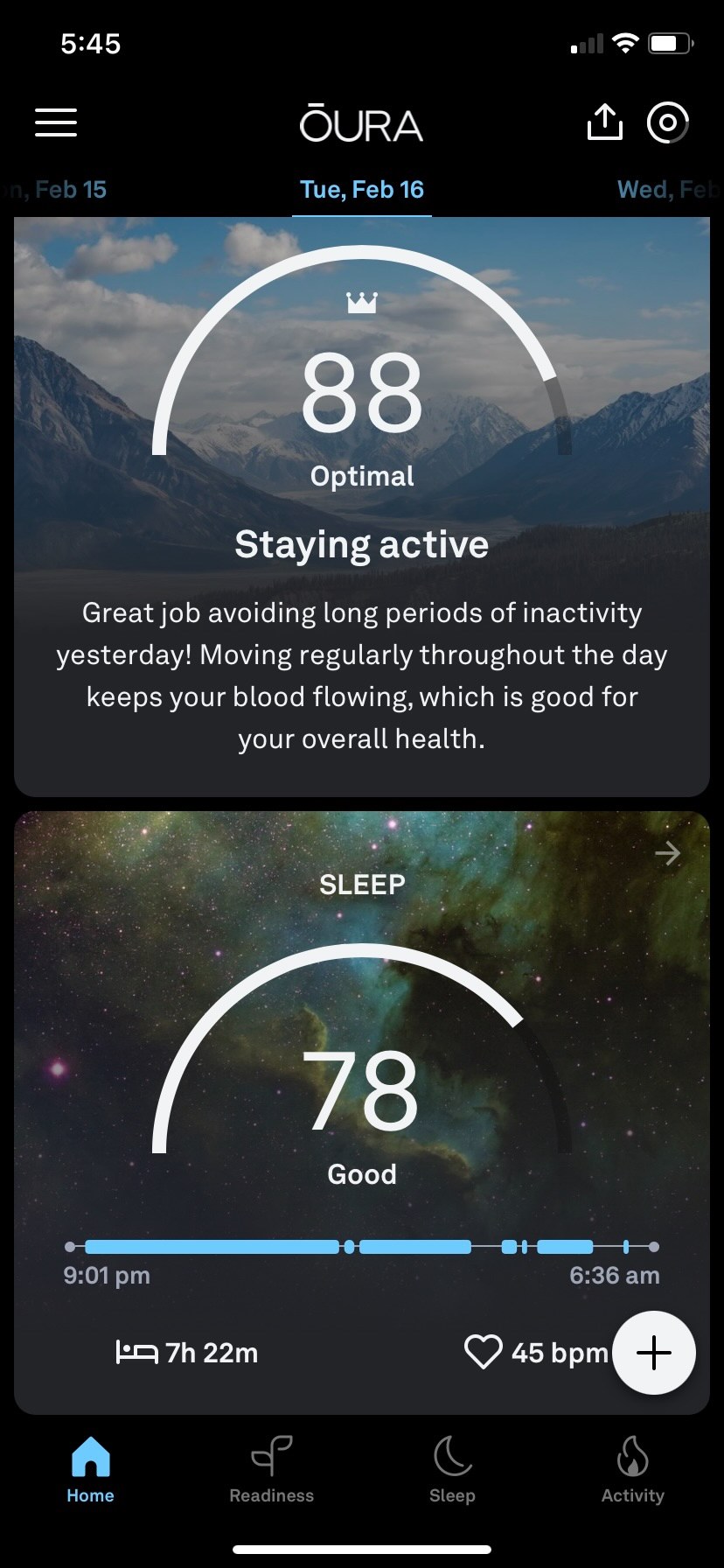
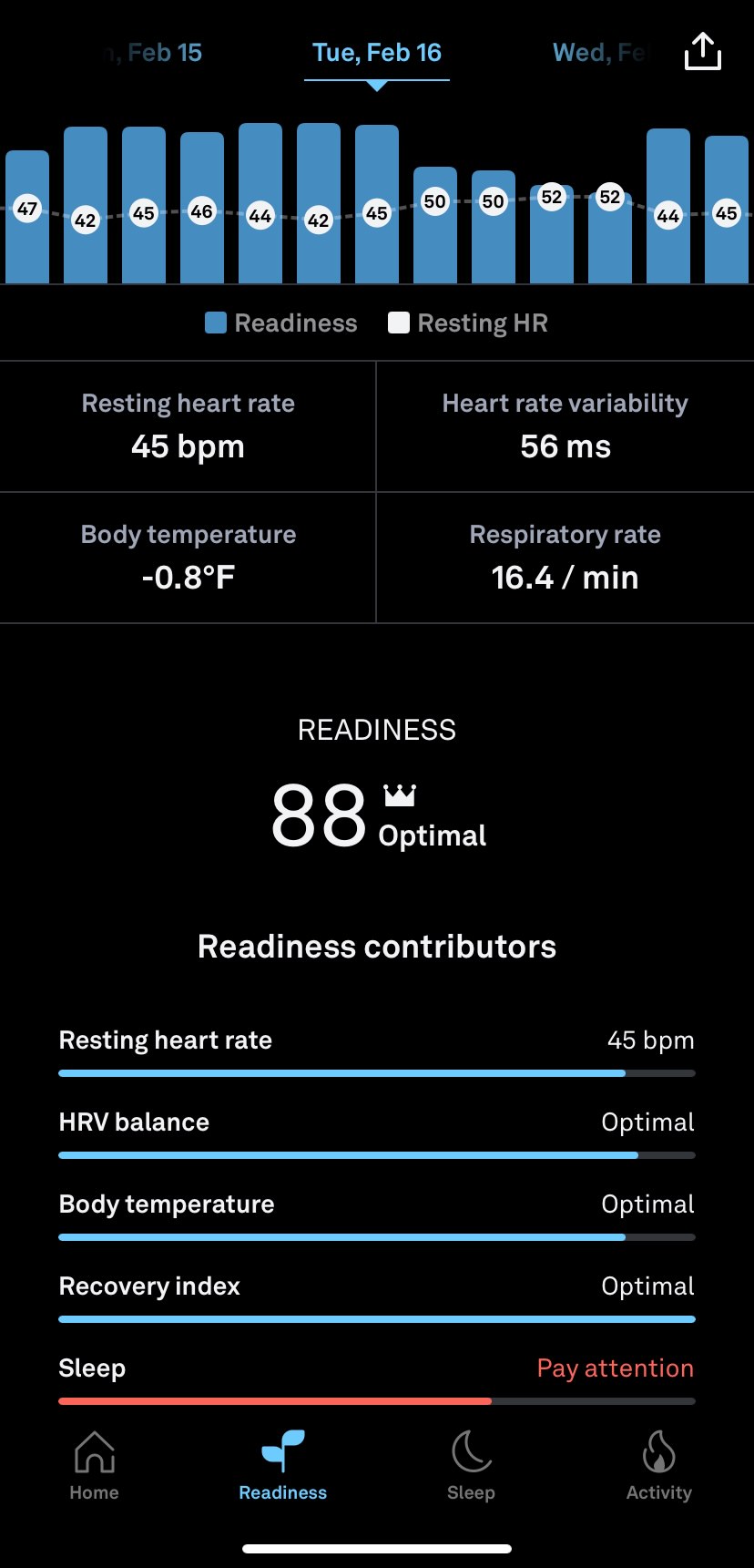
Wednesday
Big thing that caught my eye here was that my RHR (resting heart rate), which is usually around 43-45 bpm, was elevated to 50 bpm. Resting Heart Rate is the number of times your heart beats per minute when you're at rest, which is a good measure of your recovery. The lower your RHR is, the healthier your heart is, and the more efficiently it pumps blood. An elevated RHR can be a sign that there may be an issue. Your body may be reacting to a night out with drinks, experiencing stress, or fighting off an illness.
Another key factor in recognizing my body was under stress was the results of my Internal Body Temperature. Internal body temperature can rise after eating, drinking alcohol, exercising late or sleeping in a warm environment. With these results and listening to my body, I did not participate in any physical activities on Wednesday, thinking I should take it easy on my body and let it recover.
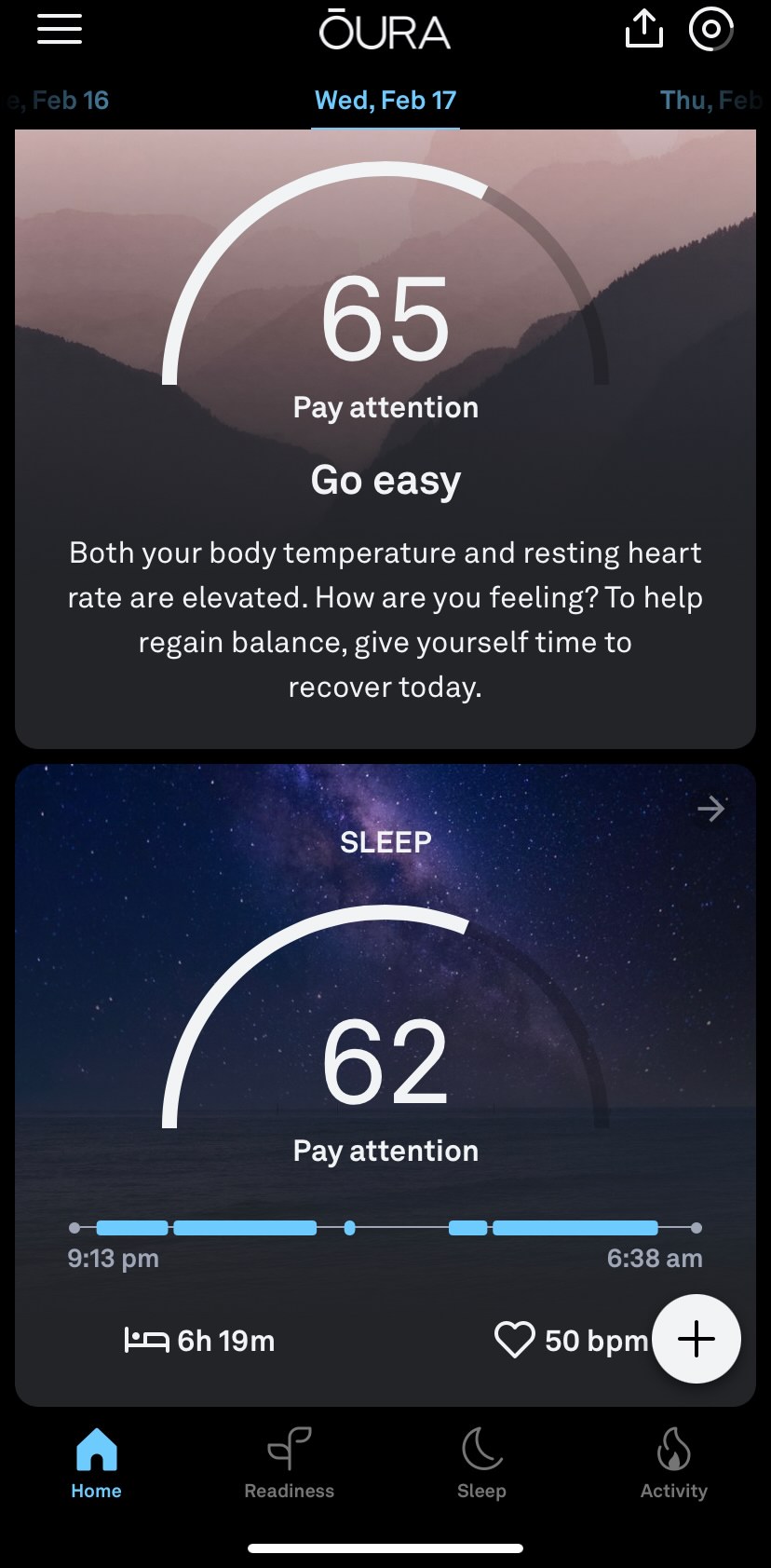
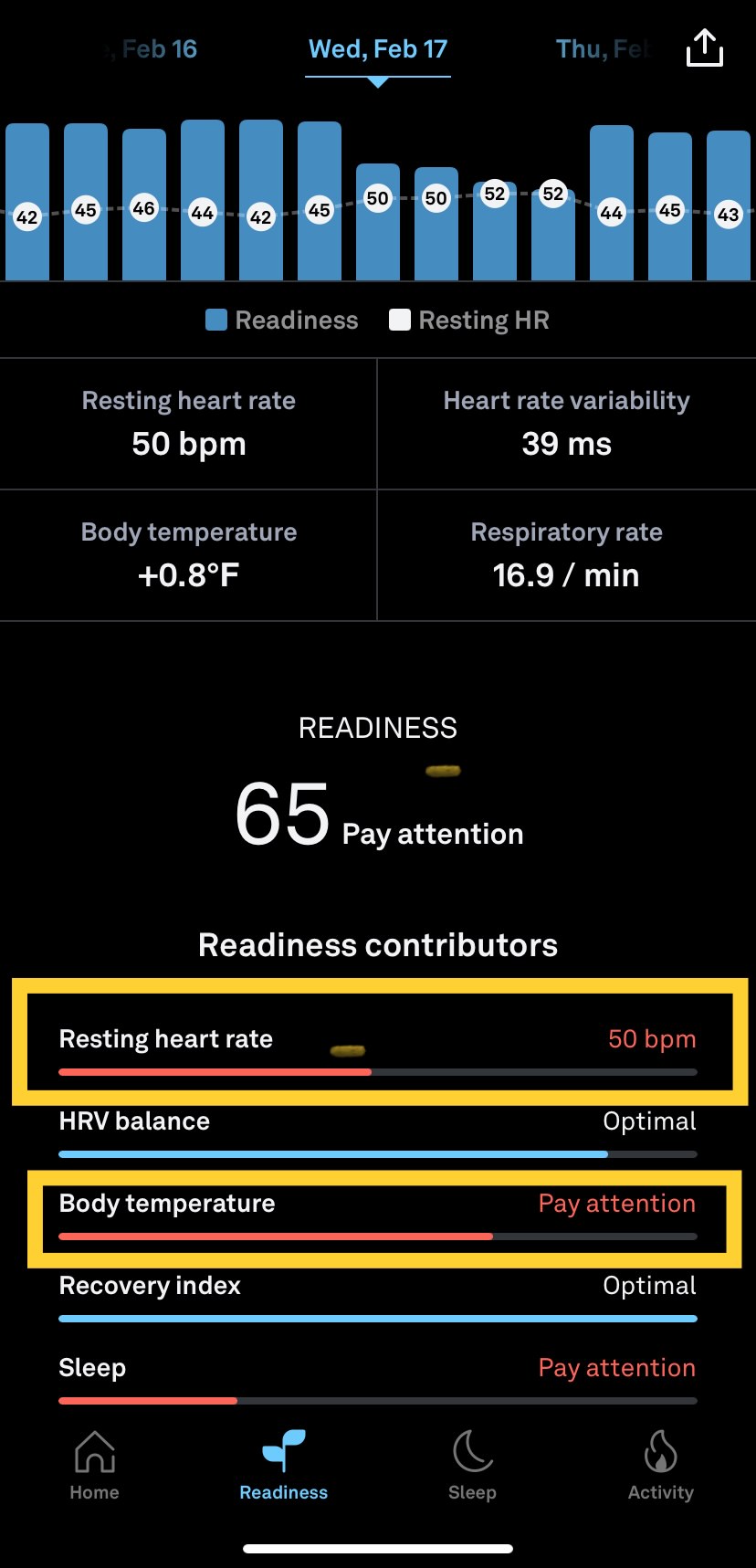
Thursday
Thursday morning was the first time I felt uneasy after checking my results. After getting nearly eight hours of sleep, I was certain that I should have recovered from the previous two days, especially taking now a second consecutive day off from the gym. My RHR was still higher than usual with a steady increase in body temperature and the same nasal congestion symptoms I was dealing with the previous night. I racked it up to a minor head cold I get every winter.
Eight inches of snow fell in Westchester, NY on Thursday morning and subsided around 2 PM, when I went out to shovel the driveway. I noticed a little fatigue but again categorized that as the never ending shoveling that I have been doing for the last 30 days.
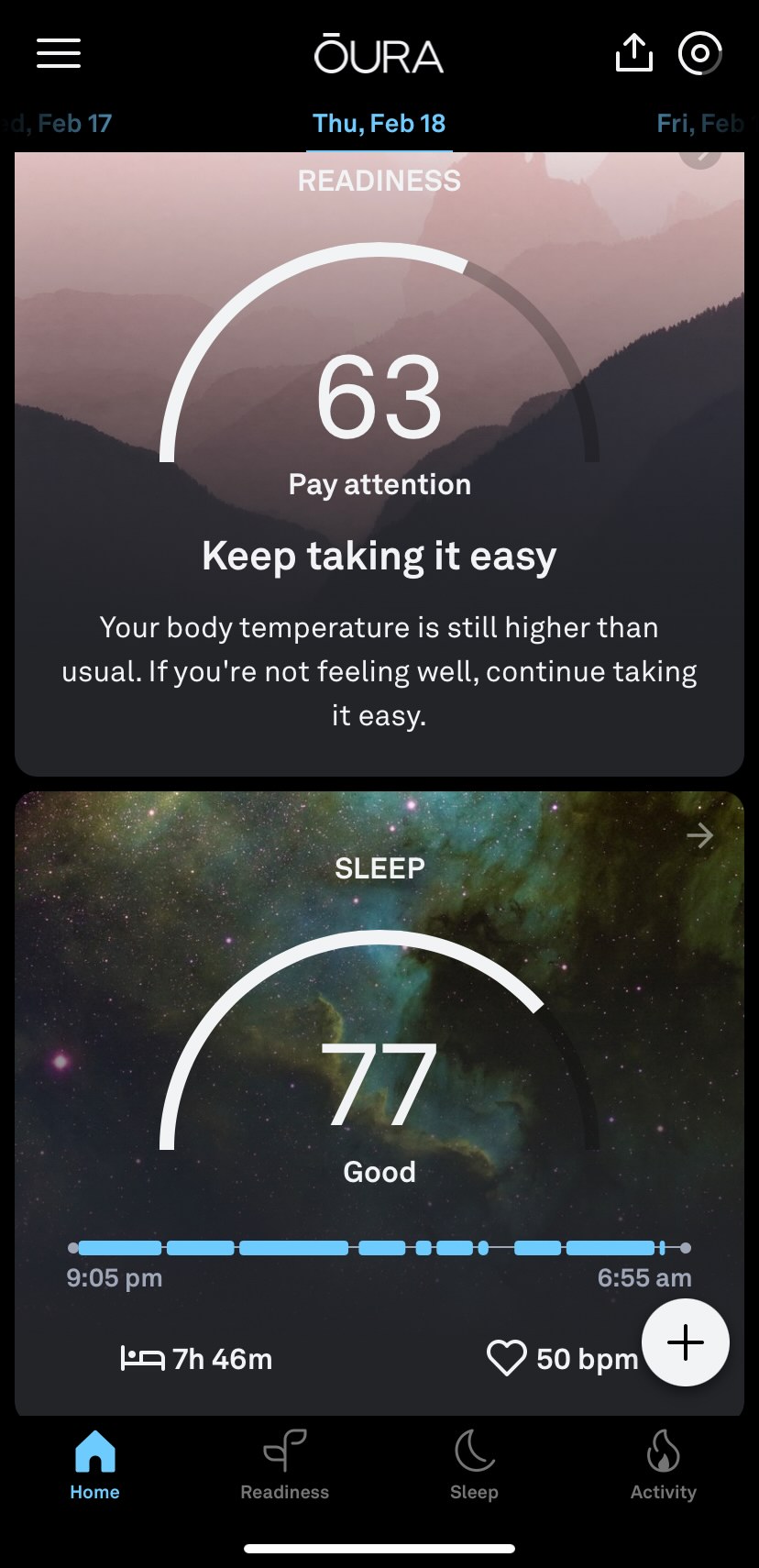
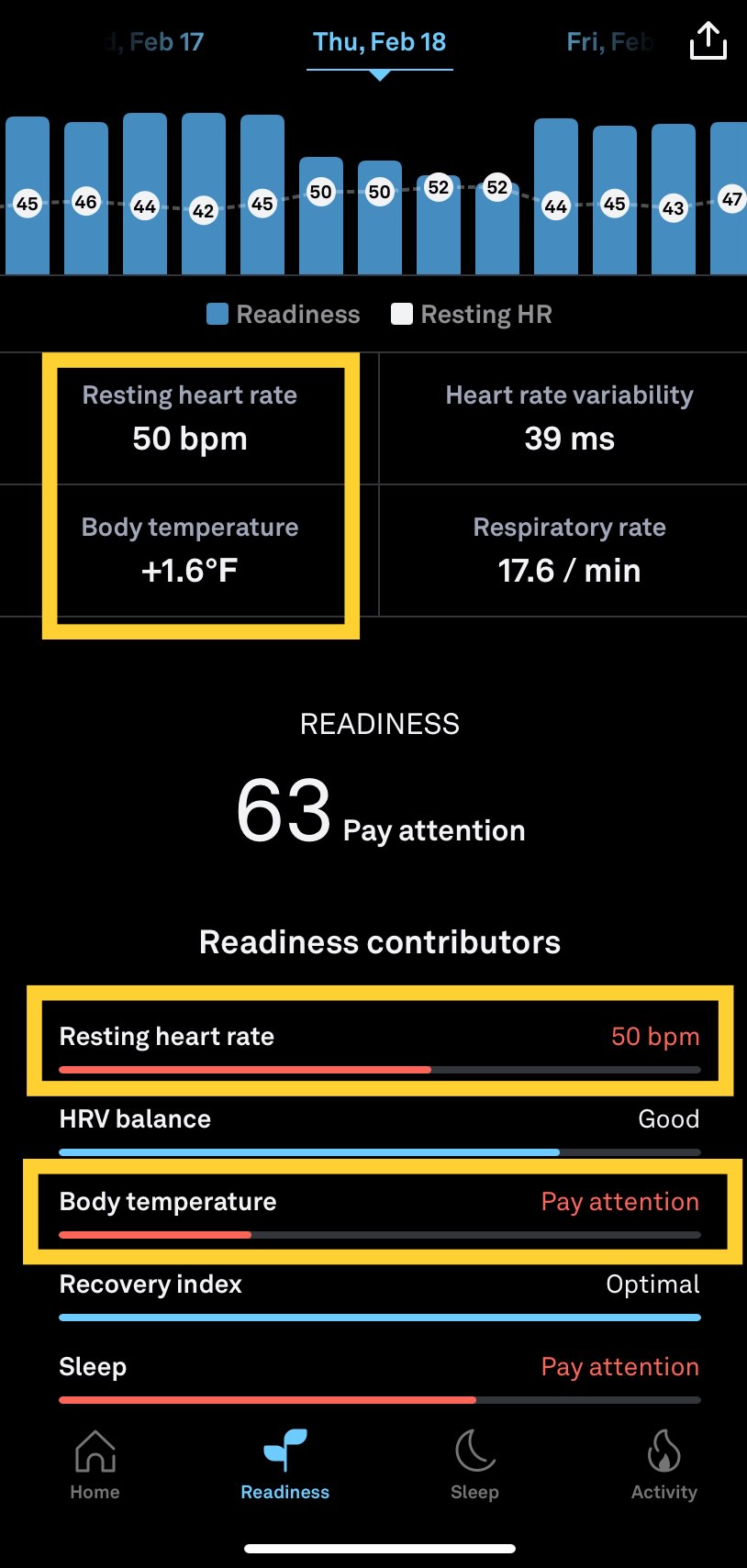
Friday
Although I slept for over eight hours, I felt physically lethargic and ill. For the first time all week, I had constant migraine symptoms. My RHR was elevated to 52 BPM, along with internal body temperature still being elevated. My HRV (Heart Rate Variability) was the last metric that plummeted and caused concern. Heart Rate Variability helps you keep track of your recovery status by comparing your two-week heart rate variability trend to your three-month average. Before going to train an in-home client, I decided to go and receive a COVID-19 test, thinking it was better to be safe than sorry. Within minutes, I tested positive.
By tracking my metrics and analyzing the worrisome data, the Oura Ring assisted me in preventing the spread of the COVID-19 virus. Nine months prior, I would have not only ignored my symptoms and labeled them as the “yearly cold,” but I would have also been blind to the important metrics (heart rate variability, resting heart rate, and internal body temperature) that I was able to track in real time. Without the Oura Ring, I am confident that unbeknownst to me, I would have spread the virus, putting clients, friends and loved ones in harm's way.
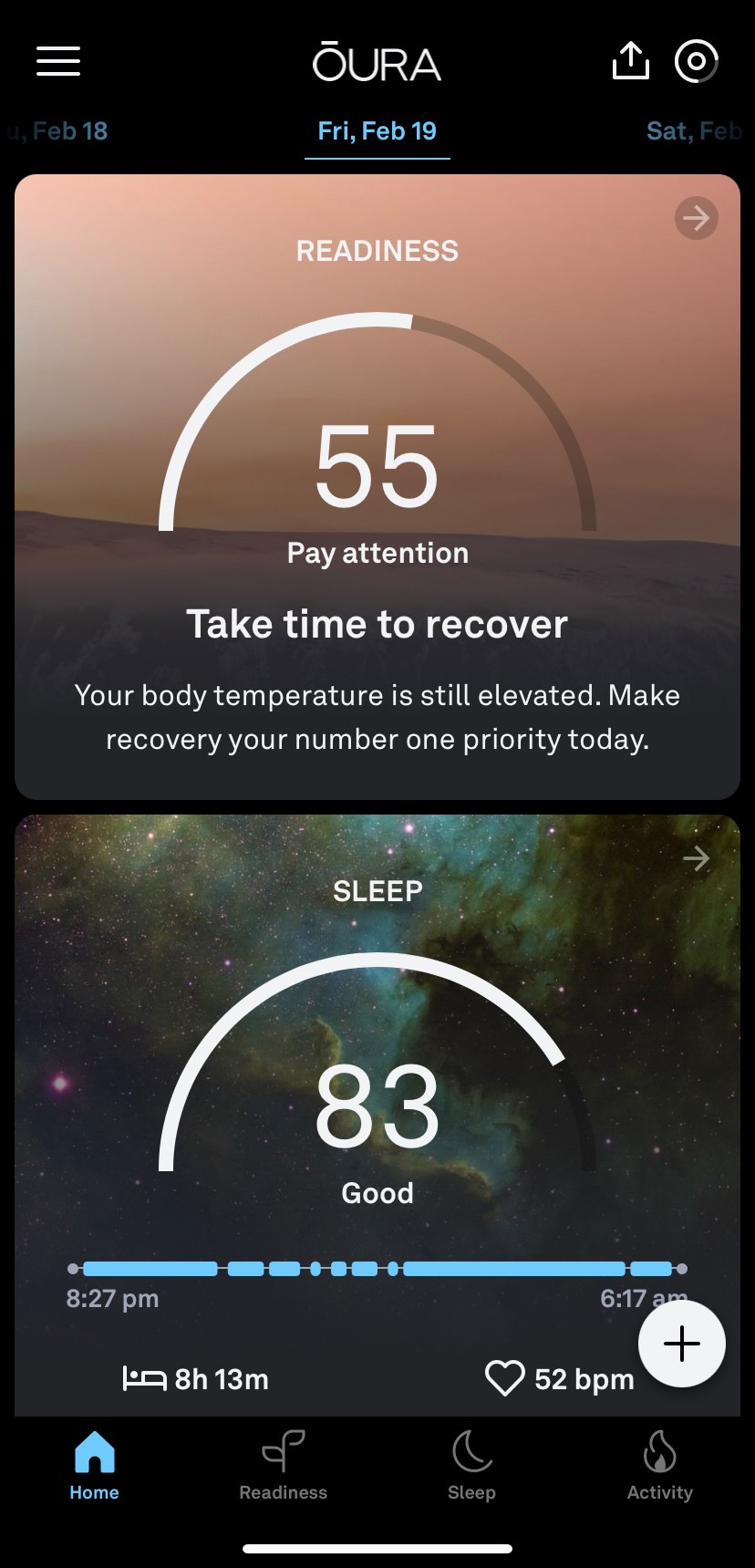
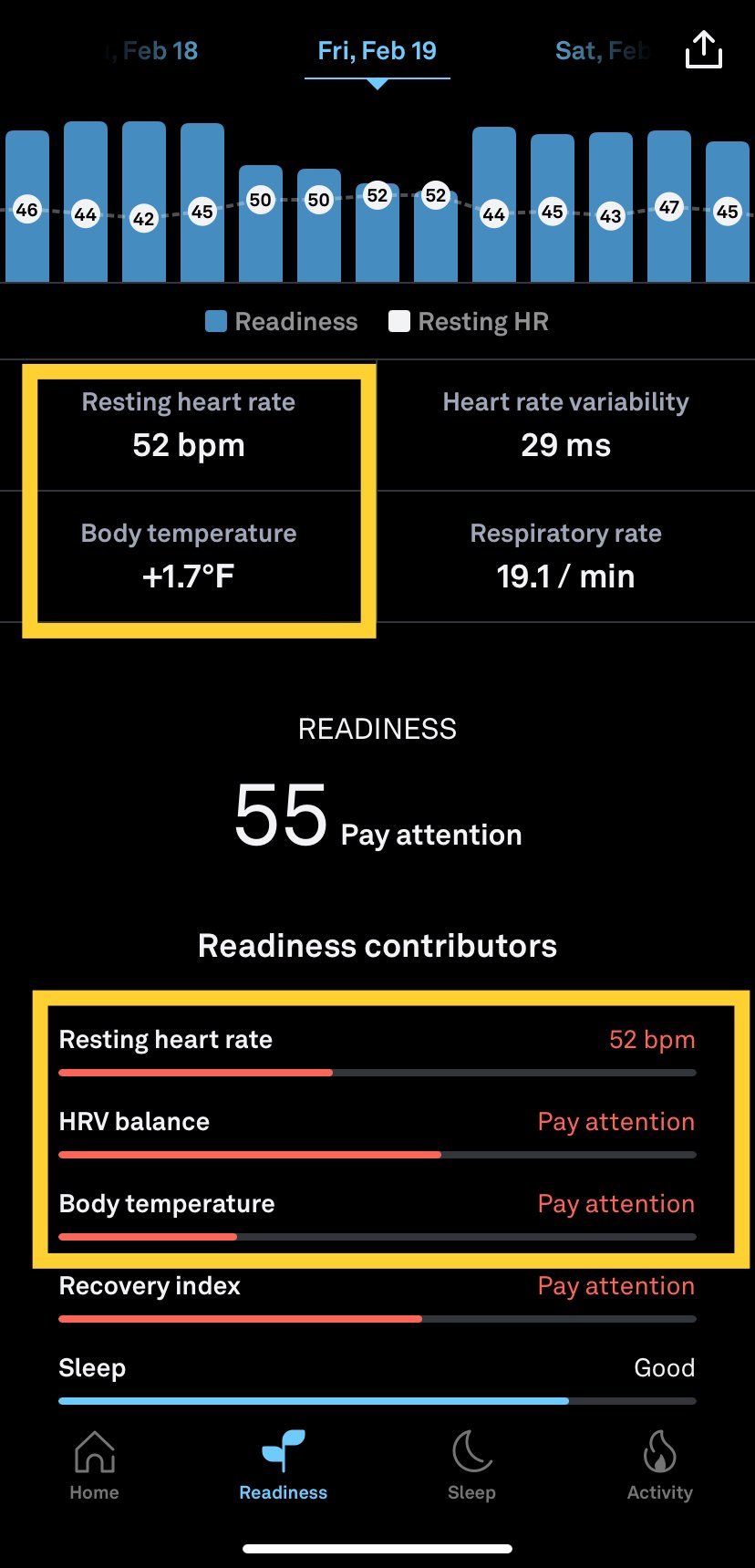
RECENT POSTS
CATEGORIES

> Privacy Practices
> Terms and Conditions
Copyright © Performance 2022.
All rights reserved.
JOIN OUR COMMUNITY
Sign up for our mailing list to learn more about Performance, stay up-to-date on our offerings, and receive our newsletter.
Digital Marketing by Rebel Interactive Group
